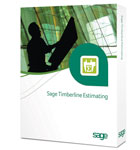At a Glance
Location
Pacific, WA
Founded
1975
Employees
49
Specialty
Material-handling systems integration
While cranes might bring to mind images of skyscrapers under construction or bridges being built, they’re actually much more universal. “Just about everything you come in contact with was handled by a crane during its evolution,” says Mike Currie, co-owner of the Washington Crane & Hoist Company. “It’s a very fundamental product, and a lot of different industries use them.” This very fact ended up helping Currie’s Seattle-based company evolve from a business born of the aerospace industry into a complete material-handling-systems-integration specialist.
Mike’s father started the firm in 1975, when Mike and his brother, Dan, now also a co-owner of the business, were college students. As aircraft maker Boeing began its rapid expansion during the next decade, Washington Crane & Hoist was positioned to supply the necessary large cranes for airplane construction. “We were the company that Boeing built,” Currie says. “All we did was work for Boeing. At one point they paid to expand our shop so we could build more for them.”
Washington Crane & Hoist succeeded in meeting Boeing’s ongoing needs and earned a reputation for delivering to precise technical specifications, but eventually the aerospace industry was overbuilt. Currie remembers receiving a phone call from Boeing executives explaining that the company would be scaling back.
Top 4 Material-Handling Systems from Washington Crane & Hoist
1. A jib crane is a horizontal beam supporting a moveable hoist that is fixed to a wall or the floor. It can be moved 360 degrees and is popular on docks and in plants for loading materials.
2. Workstation cranes span 30 feet and increase productivity by lifting 150–4,000 pounds.
3. Bridge cranes provide the most productivity and usefulness because of their three-dimensional rectangular box of hook coverage.
4. A gantry crane provides flexibility with wheels that roll on the floor. Washington Crane & Hoist offers single, double, or box-girder-bridge gantry cranes.
“It was great while it lasted, but then we had to go out in the marketplace at that time and become a company,” Currie says. “We had to change the face of the company and become one that had a brochure and a website. Today, Boeing is about five percent of our work.”
In remaking the company, Currie says, he and his brother added simpler cranes to their product list to appeal to a broader market. The two siblings took over ownership and operation of the company from their father in 2006, and now Washington Crane & Hoist provides cranes to, among others, customers in transportation, wastewater treatment, fabrication shops, the petroleum industry, and the military. The additional work helped the company expand, putting a Washington Crane & Hoist office in Anchorage, Alaska, that primarily serves the energy industry and another office in Vancouver, Washington, south of its headquarters in Seattle.
Typically Washington Crane & Hoist receives 15–20 pages of specifications from potential customers. After designing a crane and receiving approval for its submittal, Washington Crane & Hoist orders the hoists, motors, and fabricated steel. Motors are mounted and electrical wiring is installed, the crane is tested in the shop, and then it’s shipped to and installed in the customer’s facility. Cranes are certified with a load test after installation. A typical job is a 100-foot-long runway crane that takes about 10 weeks to build and ship.
Because of its niche, Washington Crane & Hoist’s work has been very diverse. The firm once built a 200-foot-span crane for Northwest Airlines’s maintenance facility at SeaTac Airport that was so large Currie was unable to close his shop’s doors and had to hire security guards to monitor the place at night. And the company’s experience with Boeing helped it earn work with the region’s military bases, where it builds cranes for tactical-equipment- and helicopter-maintenance facilities.
“With that Boeing background and experience with a demanding customer and dealing with technical specifications, we are now working with a lot of government agencies,” Currie says. “I think our experience with Boeing created a foundation for being able to execute those jobs.” ABQ


